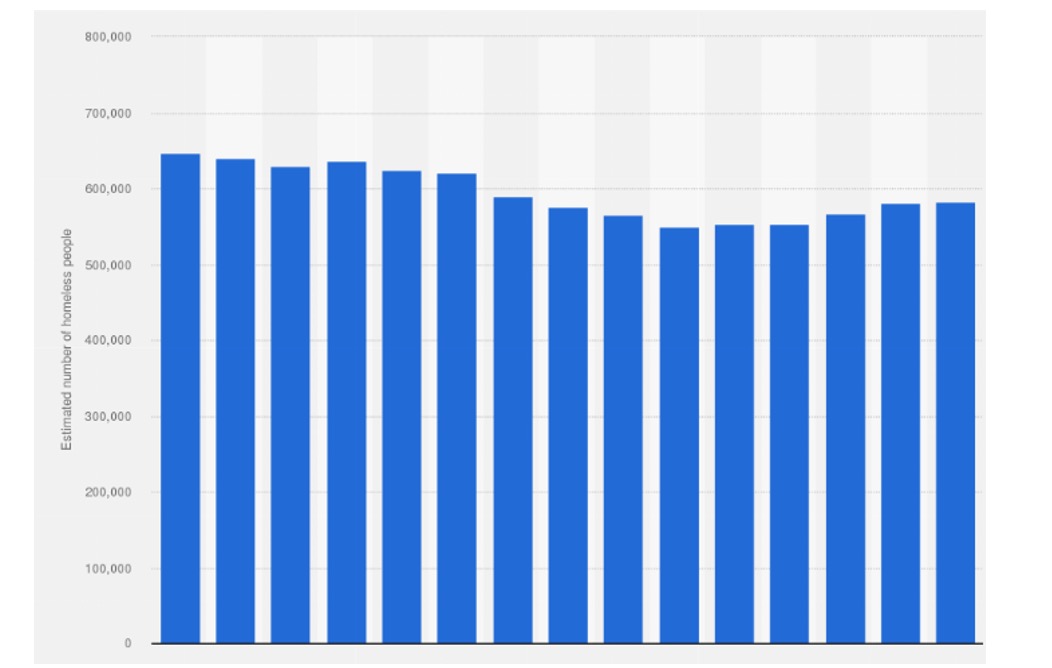Comments
PLANNNG WATCH - There is no shortage of cons in American society, and it is hard to find a bigger one than the claim that homelessness, rent gouging, and overcrowding result from a housing shortage. City Hall’s solution, therefore, is to “unleash the private sector” by eliminating zoning laws and environmental review to build more housing. While these faux answers tremendously benefit real estate speculators, they invariably boomerang. Homelessness continues to rise despite a building boom of expensive apartments.
The real causes of the housing crisis, increasing poverty and a shortage of low-cost housing, get worse. Nevertheless cities, like LA, shower the real estate industry with endless deregulation of their investment schemes. The outcome is expensive housing, typically high-rent, high rise apartments. While they increase the housing supply, they also make housing more unaffordable. Older, cheaper housing is demolished and then replaced with new, pricey buildings that also lift the price of existing housing.
Three recent studies, one from Harvard’s Joint Center for Housing Studies, the second one from several LA-based non-profits, and the third from the University of California - San Francisco Medical School, methodically debunk the YIMBY myth that a housing shortage is the cause of the housing crisis. These three studies explain why “build, baby, build” programs actually make conditions worse.
Harvard Housing Report: A new report from Harvard’s Joint Center for Housing Studies, American’s Rental Housing 2024, offers important insights about the country’s worsening housing crisis:
· “The dwindling supply of low-rent units is only worsening cost burdens. In 2022, just 7.2 million units had contract rents under $600 – the maximum amount affordable to the 26 percent of renters with annual incomes under $24,000. This marks a loss of 2.3 million units since 2012 when adjusting for inflation. The spike in asking rents during the Pandemic accelerated the trends, with more than a half a million low-rent units lost just between 2019 and 2022.”
· “Like evictions, homelessness has grown as housing costs have increased, hitting an all-time high of 663,100 people in January 2023. In the first years of the Pandemic, renter protections, income supports, and housing assistance helped stave off a considerable rise in homelessness. However, many of these protections ended in 2022, at a time when rents were rising rapidly . . . As a result. . . the total number of people experiencing homelessness in unsheltered locations reached 256,620, the highest on record.”

Rise in US homelessness in since 2010.
The Vacancy Report: This 2020 study carefully analyzed LA’s housing crisis and rebutted the claim that it is caused by a housing shortage:
“With more than 36,000 unhoused residents, Los Angeles simultaneously has over 93,000 units sitting vacant, nearly half of which are withheld from the housing market. . . The power of finance, which has brought 67% of the city’s residential units under its control, is also manifest in the ability of speculative developers to remake neighborhoods to fit their own vision. The pattern of development occurring all across Los Angeles further contributes to the vacancy and houselessness crises, as new units are priced beyond the reach of most Angelenos, leading to an excess supply of high-rent housing . . . coupled with a crisis of unmet need for housing for the most vulnerable.”
California Statewide Study of People Experiencing Homelessness: The University of California San Francisco (UCSF) Medical School June 2023 study of homeless in California concluded that underlying causes are economic inequality and exorbitant rents, not a housing shortage.
· “High housing costs combined with low incomes left participants vulnerable to homelessness.”
· “Homelessness does not happen in a vacuum. It occurs in conjunction with structural conditions that produce and reproduce inequalities. These conditions include high housing costs, low wages that do not keep pace with inflation, and the steady disappearance of jobs from low-income neighborhoods . . .”
· “Participants overwhelmingly believed that additional money would end their homelessness, whether through shallow subsidies, one-time lump-sum payments, or deep rental subsidies.”
This UCSF study concluded that the best way to reduce homelessness is financial subsidies to the homeless. None of the homeless subjects interviewed for this study identified zoning laws as the cause of the housing crisis.
Conclusion: These three studies did NOT rely on the real estate industry for self-serving solutions to the housing crisis. In fact, the UCSF study developed its policy recommendations of housing subsidies and a stronger safety net through structured interviews with Californians experiencing homelessness.
Instead, public officials turn to the real estate industry for “solutions” to homelessness. This is also why City Hall never considers two obvious solutions to the housing crisis: restoring nonmarket public/social housing programs and raising wages levels to reduce economic inequality.
(Dick Platkin is a retired Los Angeles city planner who reports on local planning issues for CityWatchLA. He is a board member of United Neighborhoods for Los Angeles (UN4LA).). Previous columns are available at the CityWatchLA archives. Please send questions to [email protected].
















